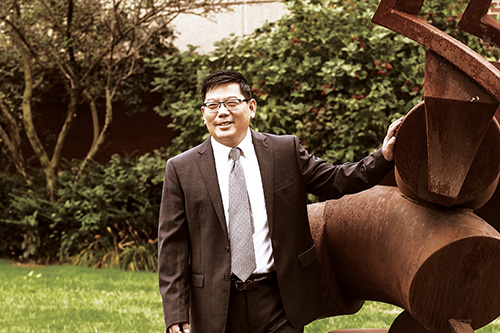Professor Shengyong Zhang Develops Practical Applications for Powerful Math
Shengyong Zhang, Ph.D. - Associate Professor of Mechanical Engineering

Problem Solver
Differential equations are powerful mathematical tools in engineering analysis. However, many students feel unaware of the practical applications of mathematics. Professor Shengyong Zhang helps students develop mathematical models of practical engineering systems through research projects. For example, vehicle suspensions are modeled with differential equations and Laplace transforms for studying dynamic responses when running over speed bumps.
“One ABET criterion focuses on the development of an ability to identify, formulate and solve practical engineering problems using techniques, skills and modern engineering knowledge,” says Zhang. “Real engineering problem-based projects and research play a crucial role for students in the process of grasping problem-solving skills for life-long learning.”
Zhang’s research interests lie in the fields of computer modeling and simulation, automobile lightweight design, vibration and acoustics, and system dynamics. He believes it is essential to introduce students to the most prevalent software tools used in engineering today.
Finite element analysis (FEA) shows its great power in the mechanical product design. Zhang integrates FEA in his lectures, laboratories, projects, and research. For example, aircraft wings are modeled with parametric CAD and followed by FEA for improving vibration performance.